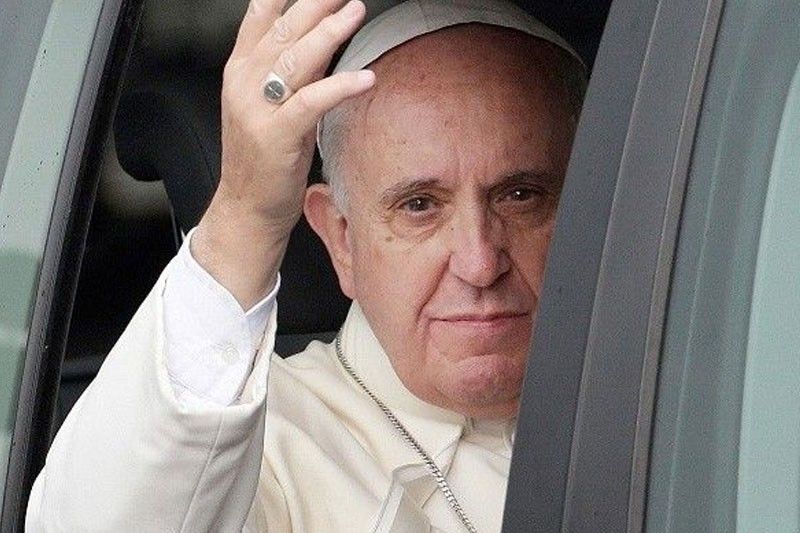Pope Francis invited to visit Philippines

For 500th year of Christianity
CEBU, Philippines — Cebu Archbishop Jose Palma revealed on Sunday that Filipino bishops invited Pope Francis to join the 2021 celebration of the 500th anniversary of the coming of Christianity in the Philippines.
As the propagation of Christian faith was believed to have sprung from Cebu, the province will surely be a significant venue for the much-awaited centennial celebration.
During the Jan. 20 Pontifical Mass at the Basilica Pilgrim Center, Palma urged the Catholic faithful to pray with the bishops that the well-loved pope will respond to the invitation and visit the country during one of its biggest religious event in 2021.
“Kon itugot ni Lord, gi-ampo nato. Dili pa man gyud kita sigurado. Posible moabot ang Papa (Pope Francis) kay giimbitar man. Ampo kita unta kalooy sa Diyos bisitahan kita utro sa Santo Papa tungod kay kini importanti nga kasaulogan ang 500th anniversary sa pag-abot ni Señor Santo Niño sa atong nasud,” said the Hiligaynon bishop in his homily during the High Mass celebrated on the feast day. (Let’s us pray that the Lord will allow the Pope to visit us again because the 500thanniversary of the arrival of the Sto. Nino in the country is a very important event.)
Palma recalled that during the 1521 Spanish expedition, Ferdinand Magellan landed in the islands bringing the wooden image of the Child Jesus that was later on given as baptismal gift to the Cebuano ancestors, who were the first to be converted as Christians.
Almost five centuries after, the 68-year-old prelate said this faith and veneration to the Santo Niño de Cebu (title given to the image) continues to flourish at present and now one of the country’s celebrated devotion.
He said the highly-revered image, which is believed to be miraculous, usually attracts a huge crowd that pay homage to the original relic, one of the country’s oldest religious icon, and a significant symbol of Catholicism.
Palma said that is why the image is commonly described as the "batobalani sa gugma" or the magnet of love.
“Kita sa Pilipinas makaingon nga nagpadayon kining pagtuo nga buhi ug mao kini atong gipasalamatan sa Diyos… Kon si Santo Niño anaa diha sa atong kasingkasing, anaa sa atong mga kabanay, anaa diha sa atong komunidad, magdala kini og grasya nga kita padayon nga magtubo sa pagpahiubos ug pagserbisyo,” he said. (Here in the Philippines, the faith lives on and we are thankful to God for it. If Sto. Nino is in our hearts, in the family and in the community, this will give us blessing that we grow in humility and service.)
Palma underscored that Cebuanos should be grateful to God of the many gifts aside from bestowing the Santo Niño image.
After being chosen as the host of the 51st International Eucharistic Congress in 2016 and of the National Youth Day this year, Cebu will be part of history again this coming Jubilee Year in 2021, he announced during the Mass.
“Grasya sa Ginoo nga sa tuig 2021 tungod kay Cebu man ang cradle or birthplace of Christian civilization (in Southeast Asia), kita ang sentro sa daghang mga activities pagsaulog sa 500 years sa atong Christianity,” he said. (It’s is God’s blessing that since Ceb is the cradle of Christian civilization, we are the center a several activities during the 500 years celebration of our Christianity.)
While there is no doubt that Cebu is a significant place where Christianity bloomed, many historians continue to argue on the period or date when the propagation of this faith began.
Some contested that Christianization already spread after the wooden image was rediscovered in 1565 and thus the counting should start thereon.
Palma further explained that the “kaplag” means the “Nino found us” because prior to that, the Filipinos are pagans.
“Pero pagabot ni Señor Santo Niño niadtong April 14, 1521, sa unang bunyag adunay unang katolikong Pilipino,” he said further. (When the Senor Sto. Nino arrived on April 14, 1521, the first Catholic Filipinos were made through the first baptism.)
On a religious context, Palma explained that while it was important that the image was found by the returning Spaniards in 1565, the event in 1521 is even more vital because it was the Child Jesus that found the Cebuanos. (FREEMAN)
- Latest

























